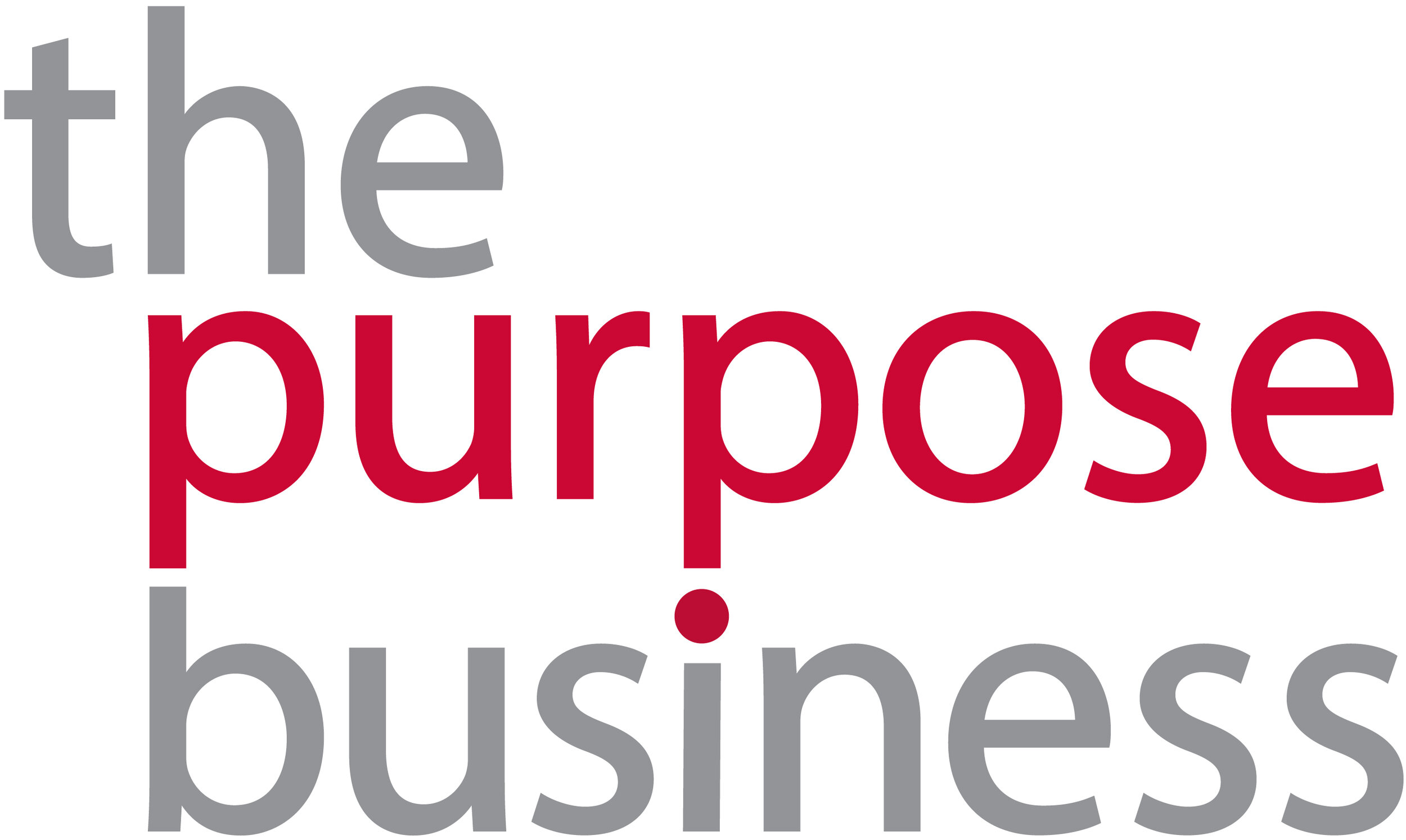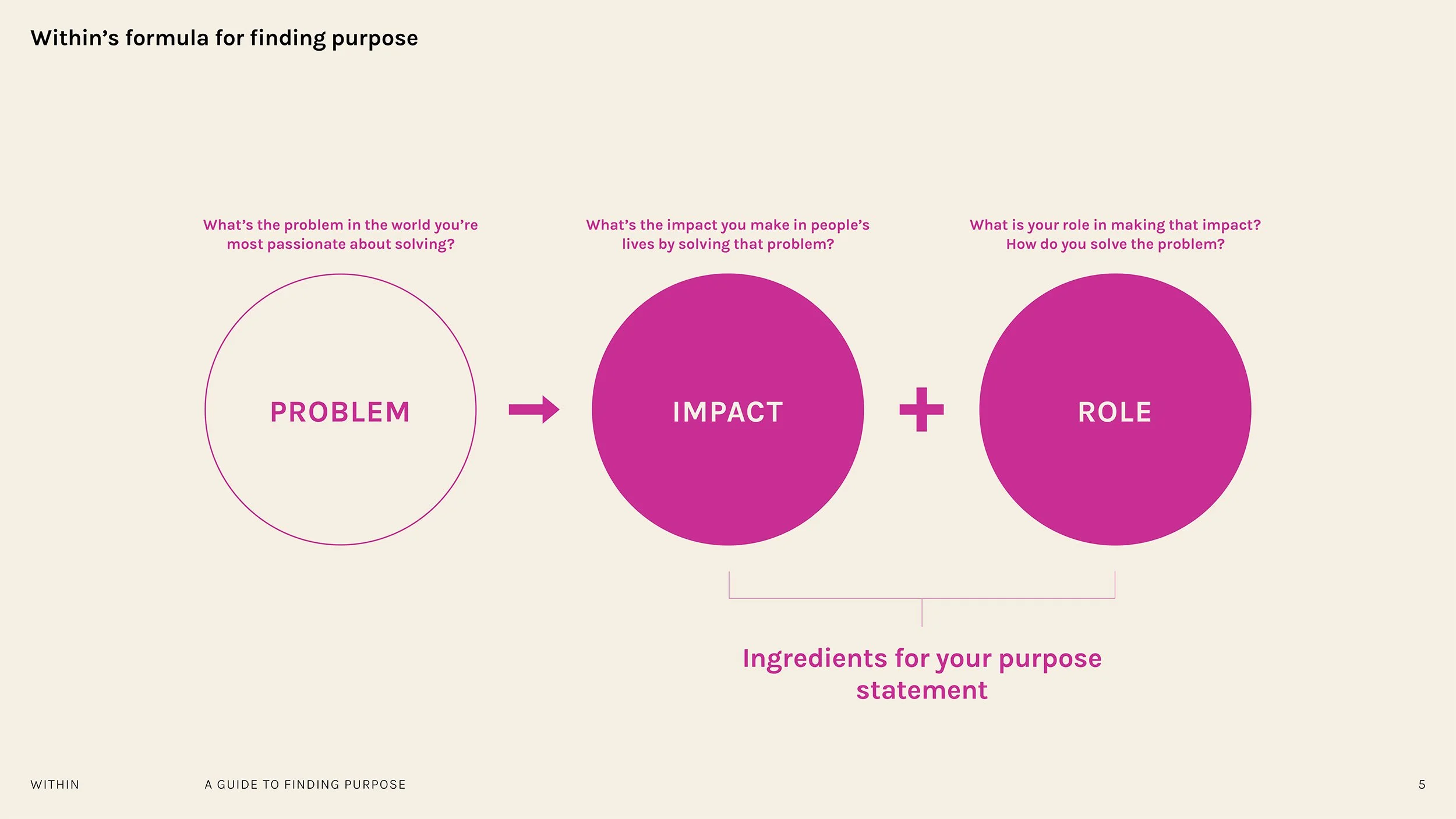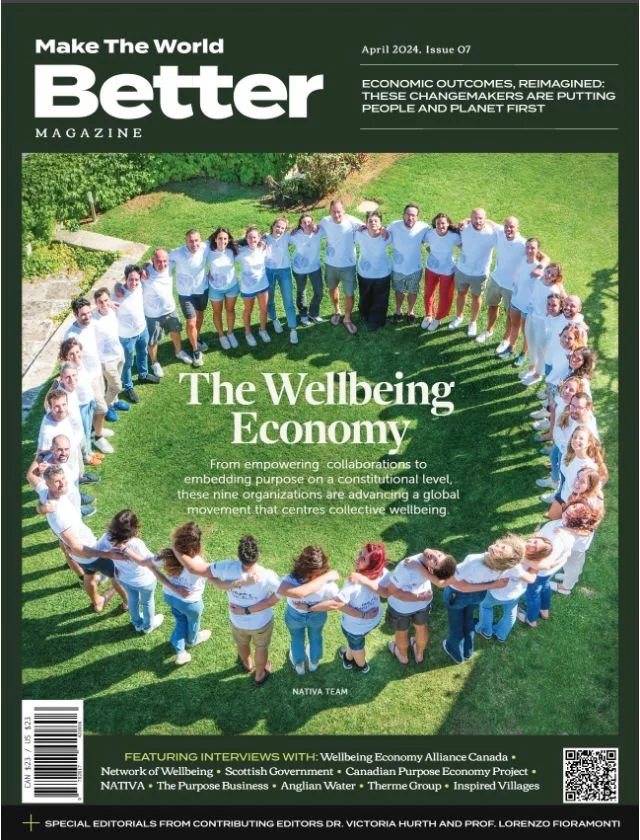Purpose is in. But it is hard work. Here’s why.
Your why, centre line, north star, ikigai, raison d’etre, what gets you up in the morning… Purpose.
Leaders in the ‘80s and 90s spent days crafting vision and mission statements in corporate retreats and offsites and now it feels as if purpose is the topic du jour. Of course, that’s good news in our books and we are compelled to add, “only if it’s done authentically” and it can be “activated”. Otherwise, the risk (that we are already seeing play out) is that it is being treated as a tick box exercise, as spin, or considered brand marketing. All of this misses the value that true purpose presents for an organisation.
‘We sort of know our purpose BUT...’
As TPB advisor and Singapore Head of Market Outi Grüner recently highlighted, we are hearing variations of this a lot. It is because not enough meaning has been built around it or that it has not been socialised effectively across the organisation. At TPB, we see one of our roles as bringing clarity to how organisations can build meaning around their purpose.
At our recent Breakfast with Purpose events in Hong Kong and Singapore with senior business leaders, we did just that. We moved our conversation to beyond what purpose is, to what it really embodies when truly activated. The energy and appetite was palpable - Asia is ready! This is mirrored with the positive step taken by the Singapore government to put purpose on the national agenda; and so it was a delight to be asked to conduct the first of the Expert-Led Clinics hosted by NVPC - Towards a City of Good on “What and How of Purpose” designed to guide and enhance organisations' understanding of corporate purpose.
68% of Hong Kong attendees said they already had a purpose statement. But as one participant shared, it was enlightening to see the power of purpose and understanding how purpose - when done right - can drive business. This is a key focus for us at TPB – how to define and demonstrate that purpose is core to embedding sustainability and driving meaningful impact. In 2023, this focus is reflected in our strategic partnership with Within People to support businesses in Asia to become purpose driven.
Getting it right
Within People provide 10 guiding principles as a helpful resource for finding and articulating your purpose to make it meaningful, and to avoid the pitfalls that too many empty purpose statements fall into.
“Purpose is not a brand slogan. It’s powerful, something to reconnect to, not invent. Look for what’s true, what’s already within you.”
If you have an existing purpose statement, take a look and see how you fare. If you haven’t started yet, this may prove a helpful spring board.
Purpose requires authenticity
We all acknowledge that it is a hard question to answer - what is your purpose? (And if it’s easy - it’s probably not quite right.) Fashioning a statement is one thing but making sure it’s right is even harder. And living up to it is then daunting because every time you exercise it, it must be both authentic and consistent. All the time. And that is why it is your north star - an authentic purpose keeps you from straying off course.
One attendee in our Singapore Breakfast with Purpose honed in on the question of “How to live it. How to take it beyond a statement on paper?”. For this to happen, purpose needs to be integrated into everything – from crisis management to HR practices such as onboarding. This is all part of the systematic work we have done with organisations such as Universal Robina Corporation, a food conglomerate in the Philippines, to help them move towards becoming a purpose driven organisation.
“One of my key takeaways is the importance of linking individual values and purpose with the company purpose when hiring”
Running a truly responsible business hits the core of your purpose - and if every decision is anchored in purpose, every decision made will stem from it. Which investment to make? Which partnership to reassess? Why chase this certification or reporting framework? What DEI targets to chase? Purpose guides you to help find the right opportunities and make authentic choices.
Looking ahead
How do we get started in rethinking business as usual and become more purpose-driven?
It comes down to the business case. What is the unique contribution an organisation makes that impacts those it serves? A starting point could be to use the first national standard on purpose, which is the PAS 808.
It is ground-breaking in that it guides governing bodies and executive managers on what purpose is, how a purpose-driven organisation (PDO) approaches decisions, and how it acts. Use it as a diagnostic tool and review where your organisation sits today versus where it might need more work to become more purpose-led.
It’s certainly an exciting and significant development in this space, yet as Pat and Dr Victoria Hurth have shared, it needs to be tested, it needs to make sense to business leaders in Asia and ultimately owned in the local context. This is what TPB is convening at the moment - pulling a centre point of all the purpose practice in the region. Will you join us?




